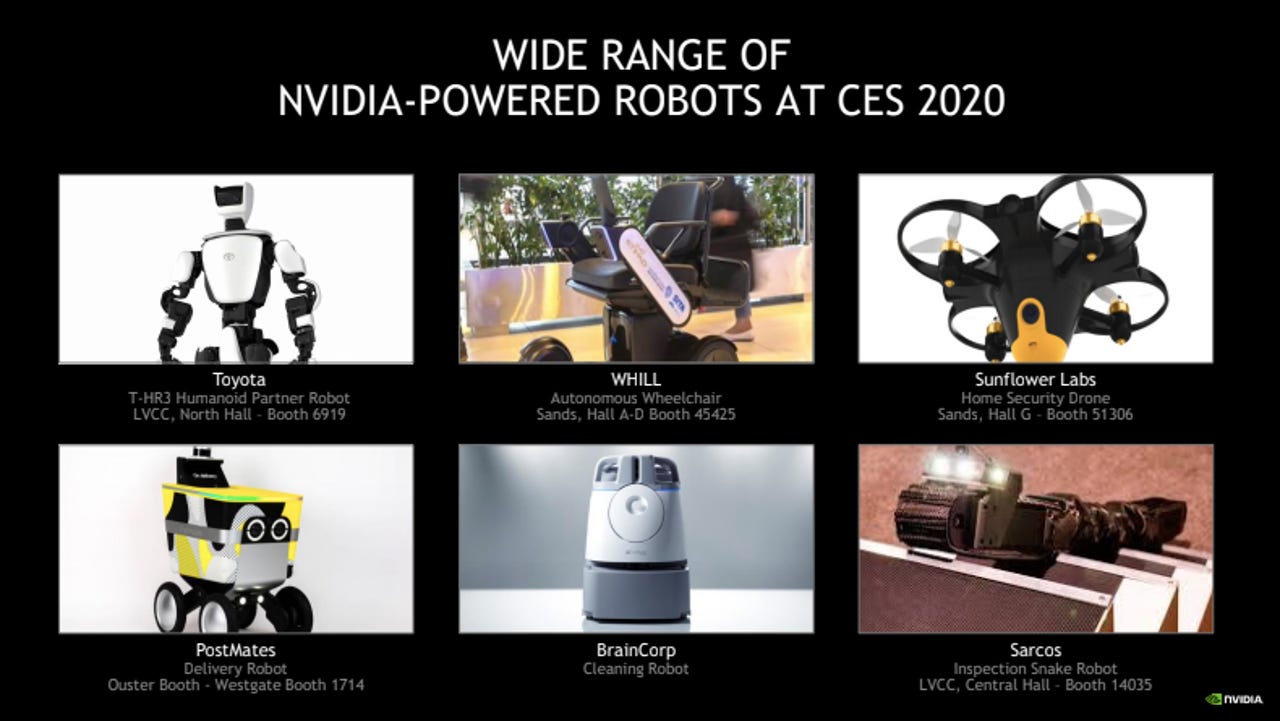CES 2020: Nvidia GPUs powering robots from Toyota, PostMates


Graphics chipmaker Nvidia is showing off its reach in the robotics space at this year's CES event in Las Vegas. The Santa Clara-based company touted that its GPU technology is being used in Toyota's new humanoid robot T-HR3, along with its Jetson AGX Xavier computer.
Featured
Rob Csongor, VP of autonomous machines at Nvidia, said in a press briefing that there would be a variety of Nvidia powered robots at CES 2020, utilizing Nvidia's Carter system for navigation and Leonardo for manipulation, in addition to its Jetson chips and reference designs.
In addition to Toyota's T-HR3, other Nivida-powered robots popping up at CES include an autonomous wheelchair from WHILL that's powered by a Jetson TX2, a home security drone from Sunflower Labs also featuring the TX2, a delivery robot from PostMates and an inspection snake robot from Sarcos.
"We span multiple vertical markets that we target," Csongor said. "One of the things that all of these autonomous machines have in common is they all have to be able to detect, see, hear, and touch. They have to detect things in the world, they have to be able to learn and plan, and then they have to be able to act. And this fundamental flow is reflected in the number of different platforms that we apply into a variety of machines."
Nvidia also announced the Isaac Sim, a tool that lets developers train robots in a simulated model and then put the trained models into a physical robot and have it navigate. Isaac Simulation will add early-access availability for manipulation later this month. The Isaac Sim is part of the next release of the Isaac SDK, which now includes fully operational reference stacks for navigation and manipulation robots.
Nvidia also announced some advances to Nvidia Drive, its software defined platform for autonomous vehicles. The platform is powered by a new system-on-a-chip called Orin, which achieves 200 TOPS, nearly 7 times the performance of the previous generation SoC Xavier.
Danny Shapiro, Nvidia's senior director of automotive, said in a press briefing that Orin will be available for sampling later this year, with a goal to ship on vehicles in 2022.
On the gaming and display side, Nvidia also announced a new G-SYNC display for esports gamers that features a 360Hz design to power better gaming experiences. Partners include LG and its new OLED TVs, as well as new products from Acer and Asus.